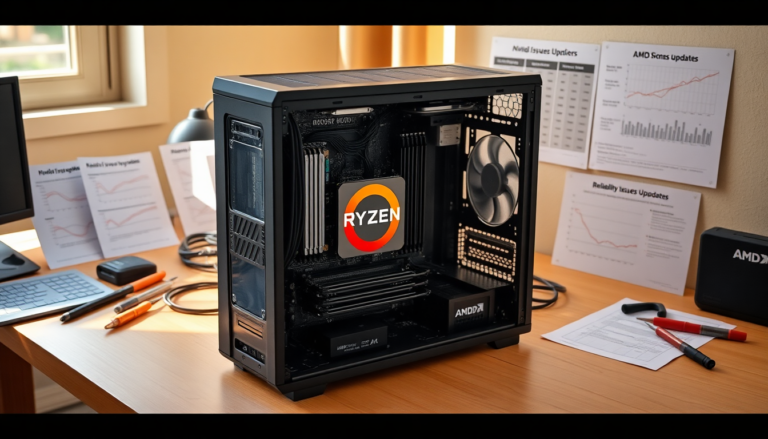Argomenti trattati
Recent concerns among users regarding the reliability of Ryzen 9000 CPUs have led ASRock to take action with a new BIOS update. This situation stems from a series of reports suggesting that these CPUs were failing under certain conditions, particularly when paired with ASRock’s AM5 motherboards. The issue has been linked to overly aggressive settings in the motherboard’s initial Precision Boost Overdrive (PBO) configurations, which are believed to have caused premature CPU failures.
Understanding the root of the problem
During discussions at Computex, it was revealed that ASRock’s early PBO presets were not calibrated correctly for the Ryzen 9000 series, leading to a higher risk of failure. Reports emerging from various online forums indicated that users experienced significant problems, prompting ASRock to initially label these claims as misinformation. However, as the situation unfolded, it became apparent that many users were indeed facing issues that required attention.
As the narrative developed, Tech Yes City highlighted that the issue primarily revolves around the electrical specifications that the Ryzen CPUs were subjected to under PBO. PBO is designed to enhance performance by dynamically adjusting clock speeds based on power and thermal conditions. Unfortunately, it seems that ASRock’s high-end and mid-range boards were pushing these limits too far, leading to failures for some users.
Technical adjustments in the BIOS
In response to the growing concerns, ASRock has rolled out a BIOS update intended to rectify the aggressive settings that contributed to the CPU failures. While early feedback from users suggests that the parameters for Electric Design Current (EDC) and Thermal Design Current (TDC) have not dramatically changed, reports indicate that ASRock has also reduced “shadow voltages”—settings that typically remain hidden from the user interface.
This adjustment aims to provide a more stable operating environment for the Ryzen 9000 CPUs, which had previously been jeopardized by excessive demands placed upon them by the motherboard’s configurations. The hope is that these changes will prevent further issues and restore user confidence in the compatibility between ASRock motherboards and AMD’s latest processors.
Is it ASRock or AMD to blame?
The ongoing debate around the cause of the failures raises questions about accountability. ASRock has been quick to point fingers, ruling out factors like memory incompatibility and excessive SoC voltages, both of which have historically contributed to previous generation CPU issues. However, as AMD and ASRock work closely, the lines of responsibility can often blur. The reality is that both parties operate under specific guidelines set by AMD, meaning that both hardware manufacturers have a role in ensuring that their products work harmoniously.
Moreover, it is essential to consider the impact of cooling solutions in this scenario. Users employing liquid coolers or all-in-one (AIO) systems may have inadvertently exacerbated the problem, as these setups can provide increased thermal headroom, allowing for more aggressive PBO settings that the CPUs may not be able to handle. As the dust settles, it’s clear that the complexity of modern hardware integration requires careful tuning and optimization.
The community’s reaction and next steps
The community response to ASRock’s BIOS update has been mixed. While some users express relief that the company is taking steps to address the problem, others remain skeptical about the effectiveness of the fix. Given the significant number of complaints that have emerged, many users feel that ASRock should issue a public advisory urging all users to update their BIOS to avoid potential failures.
As more information surfaces, users are left with unanswered questions. Will this latest BIOS truly resolve the issues, or are there deeper-rooted problems yet to be uncovered? The tech community watches closely, eager to see if further reports of failures surface in the wake of this update, as user experiences will ultimately dictate the success of ASRock’s efforts.
For now, the situation remains fluid, and the dialogue continues. As technology enthusiasts, we are all eager for clarity and resolution, hoping that this chapter in the Ryzen saga will soon come to a close.

